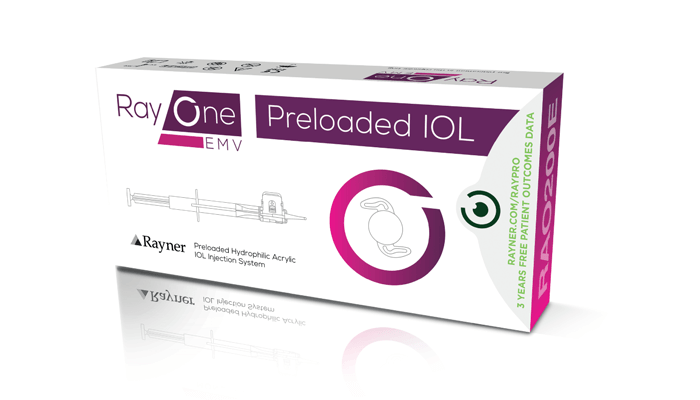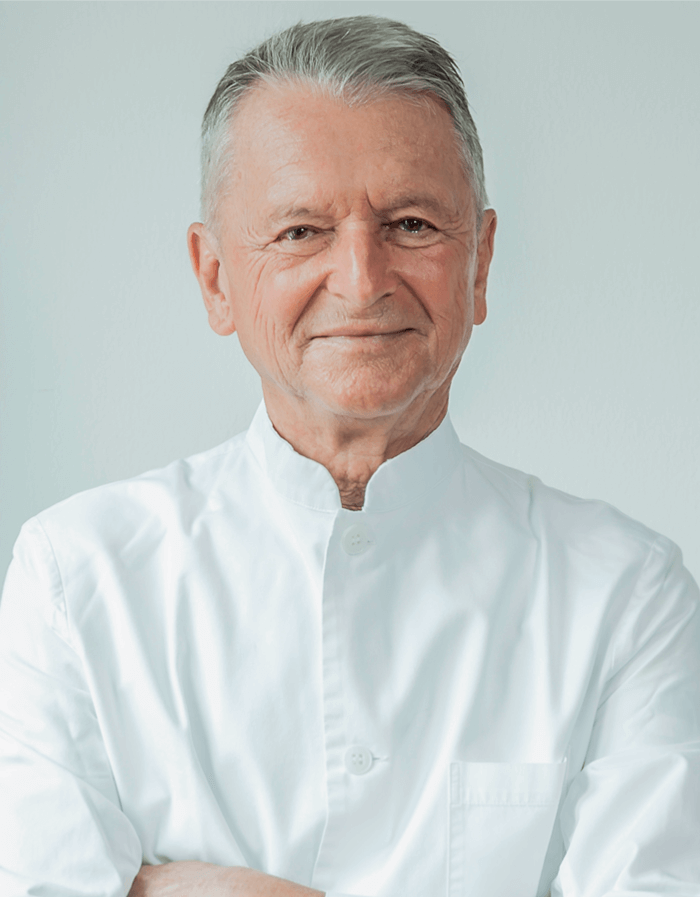
Interest in enhanced monofocal intraocular lenses (IOLs) for patients undergoing cataract surgery continues to grow, as does the number of IOLs that fall into this category. Newer advanced, non-diffractive extended depth of focus IOLs are distinct in their ability to offer an increased depth of focus compared with standard monofocal IOLs, without inducing visual side effects.
In this article, Drs Lucio Buratto and Manuel Domingues provide their perspectives on results with premium presbyopia correcting IOLs, compared to outcomes seen with new enhanced monofocal IOL options. Further, Mr Alastair Stuart shares his experience with Rayner's RayOne EMV IOL.
Experience with Multifocal IOLs and a Monofocal Alternative
Premium multifocal IOLs have been available for many years, and my personal experience with these products spans at least two decades. While outcomes were not always ideal with early products, premium multifocal IOLs did continue to improve. Nevertheless, despite their premium costs, these IOLs still offer less than perfect outcomes in many cases. Both patients and surgeons are often not completely satisfied, and in my own practice experience, up to 5 percent of my patients who receive multifocal IOLs are not happy with their visual results. This experience has resulted in my becoming interested in alternatives to these relatively costly options that do not provide the outcomes that patients expect.
One alternative to premium multifocal IOLs is RayOne EMV, which I consider not exactly multifocal or monofocal, but somewhere in between the two. This IOL option achieves an increased range of focus through slight spherical aberration (1). While this concept is familiar in the setting of laser refractive surgery, this is now becoming a compelling concept in cataract surgery as well. So far, my patients experience better outcomes than those reported with multifocal IOLs, especially as they experience improvements in intermediate vision. In my practice, we aim for modest monovision of 0.5 to 0.75 D, and my patients are satisfied, without reports of halos or other phenomena that impact night vision. I look forward to availability of a toric version in the future so that more of my patients can experience similar results to those we have seen so far.
Mini or Modest Monovision to Increase Depth of Focus
This strategy is consistent with others that aim for a goal of modest or mini monovision in the hopes of achieving better depth of focus. For instance, in one prospective cohort of 56 patients undergoing bilateral cataract surgery with the goal of pseudophakic mini-monovision (one eye corrected for distance vision and the other eye focused with near vision of -0.75 to -1.75 D myopia), patients were highly satisfied with outcomes. Of note, 93 percent of participants reported that the procedure met their expectations for decreased spectacle dependence. The study’s authors concluded that this strategy offers an affordable alternative to premium multifocal IOLs and should be considered after evaluating individual patient needs, preference and clinical presentation. Affordable options such as this will be increasingly important with an aging population that will increasingly present with the need for efficacious and cost-effective strategies to address vision challenges (2).
Returning to my own clinical experience, I find that while the goal of modest monovision does not aim for absolutely perfect vision, my patients who receive RayOne EMV nevertheless remain independent from spectacles for most activities, including sports, restaurant socialising, and daily computer use.

Here, The Ophthalmologist's editor talks to Alastair Stuart, UK ophthalmic surgeon, about his experience with the enhanced monofocal lens, RayOne EMV.
While COVID-19 represented so many considerable challenges, it did provide me with an opportunity to pause and consider newer IOL options for my patients. At the start of the pandemic, up to 60 percent of my patients were receiving monofocal IOLs, while the rest received premium multifocal products. I found that many of my patients were not happy with multifocal IOL outcomes if they experienced dysphotopsia or other common effects. As I began to consider alternative options, I became increasingly interested in the new generation of monofocal IOLs.
As a result, like Dr. Buratto, I now offer RayOne EMV with a modest monovision goal. I began with an offset of 0.5 D and have since increased to an offset of up to 1.0 D anisometropia. My patients tell me that their intermediate vision is maintained, as they are able to read computer screens and smartphones without spectacle use. While I initially considered this strategy in taller patients with longer arms, outcomes are promising with reasonable offset goals. I typically aim for a -0.5 D offset in the dominant eye and a -1.25 offset in the non-dominant eye, which is now my gold standard for this lens. Overall, an extended depth of focus of up to 2.5 D can be achieved with a defocus of 1.0 D between eyes. This results in satisfactory united binocular vision, with defocus curves seen with RayOne EMV showing a smooth transition between near and far vision (3). Meanwhile, it is important that we do not consider goals beyond this threshold, as effects like dysphotopsia could become an issue. My patients are consistently achieving Jaeger 2 or Jaeger 3 near reading vision. In addition, similar to the experience of Dr. Buratto, my patients are not experiencing dysphotopsia.
Proper Patient Selection and Setting Expectations for Modest Monovision
While patients sometimes express an interest in premium multifocal IOLs due to their desire for complete spectacle independence, there are a variety of clinical factors, including optical surface issues or dry eye, that make multifocal lenses a less than ideal option. For instance, patients may be more susceptible to dysphotopsia due to previous procedures to address myopia. For these patients, multifocal IOLs are not an option, and RayOne EMV could be an ideal alternative. In addition, while we await a toric model, this IOL is used successfully in patients with up to 0.75 D of astigmatism.
Many patients may be able to consider this lens without any considerable compromise. We consider all patient goals, including those related to work and leisure, when considering an ideal IOL. In my experience, patients with a wide variety of goals, including adequate driving vision and computer use, are very satisfied with their outcomes. Occasionally patients experience tolerance issues when adjusting to this strategy of modified monovision. This is easily corrected with some spectacle use, and I am always careful to set patient expectations from the beginning that some spectacle support may still be required. Alternatively, the anisometropia with modest monovision may be modified with subsequent laser surgery if it is a considerable issue to the patient. While I find it important to address these potential issues, my patients are very satisfied and do not report tolerance issues in most cases.

Our collective experience with IOLs is considerable, representing more than four decades of use. Over this time, we continue to evaluate new options in the continued search for a perfect solution to our patients’ needs. In the case of modest monovision with RayOne EMV, it is possible that we are coming close.
References
- RayOne EMV, Rayner Intraocular Lenses Limited (2021). Available at: https://rayner.com/en/iol/monofocal/rayone-emv/
- DG Goldberg et al., “Pseudophakic mini-monovision: high patient satisfaction, reduced spectacle dependence, and low cost,” BMC Ophthalmol, 18, 293 (2018).
- A Clinical Comparison of RayOne EMV and TECNIS Eyhance, Rayner Intraocular Lenses Limited (2021). Available at: https://rayner.com/wp-content/uploads/2021/06/A-Clinical-Comparison-of-RayOne-EMV-and-TECNIS-Eyhance.pdf
